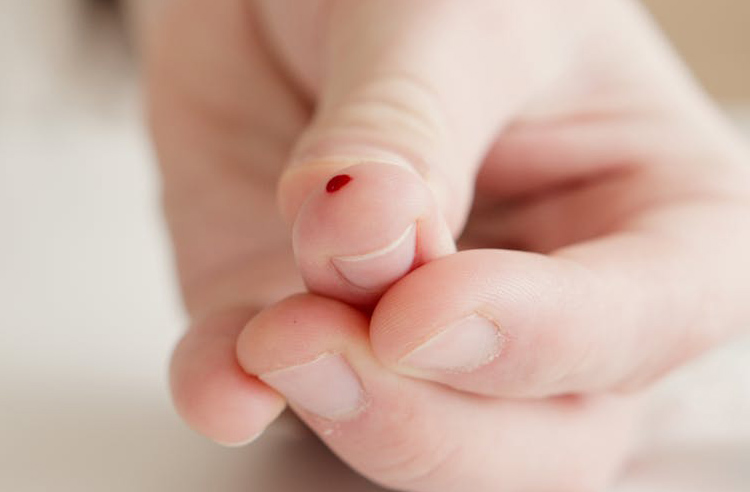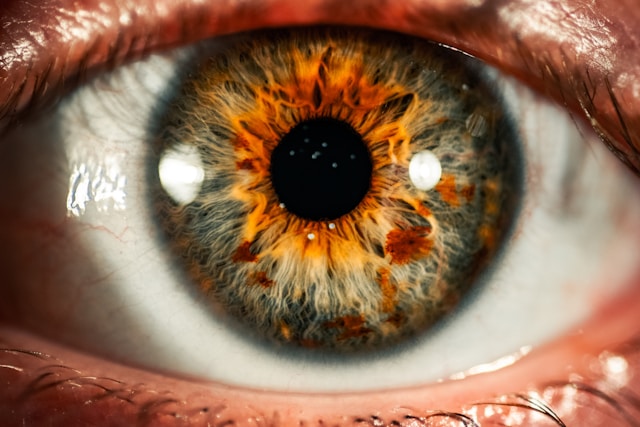April 17 is World Hemophilia Day, and in commemoration, Bio.News sat down to talk with the National Bleeding Disorders Foundation (NBDF) about the importance of finding cures for Hemophilia and other inheritable blood and bleeding disorders. The Foundation strives to address the need for cures and prevention of complications from these disorders through research, education, and advocacy, enabling people and families to thrive.
What are bleeding disorders, and how are they treated?
In the United States, about 33,000 people are living with Hemophilia, primarily males. The two most common types of Hemophilia are Hemophilia A and Hemophilia B, which are caused by a lack of different clotting factors. Either type can lead to prolonged and excessive bleeding after injury, as well as to spontaneous bleeding into muscles and joints. The severity of symptoms can vary widely depending on the severity of the deficiency.
There are many different types of therapies for bleeding disorders, and new ones are in development. Each person may respond to a treatment in their own way, so close partnership with hematologist and the complete care team is vital.
Today, therapies for bleeding disorders can be grouped into three categories:
Factor replacement therapies focus on replacing the deficient clotting factor, using molecules that are either similar to natural factor found in humans (recombinant) or that use an actual human molecule (plasma derived.) In fact, there are several human plasma-derived factor replacement products and recombinant products available to treat and prevent bleeds in people with Hemophilia, von Willebrand disease, and more rare bleeding disorders. These treatments increase the amount of factor in the body to levels that lead to better clotting, and therefore less bleeding.
In contrast, non-factor replacement therapies help prevent bleeding or assist in better clotting using other methods in the body besides factor replacement therapy.
Gene therapy is a way of treating a genetic disease or disorder by providing people with working copies of the gene to correct the disease or disorder. There are different approaches to gene therapy, including gene transfer and gene editing. To date, Hemophilia A gene therapy has been approved by the FDA for the treatment of adults with severe Hemophilia A without antibodies to adeno-associated virus serotype 5 (AAV5) detected by an FDA-approved diagnostic test. Hemophilia B gene therapy has also been approved by the FDA for the treatment of adults with Hemophilia B who currently use factor IX (FIX) prophylaxis therapy, or have current or historical life-threatening hemorrhage, or have repeated, serious spontaneous bleeding episodes.
There are several new therapies currently being explored for the treatment or cure of bleeding disorders. These treatments are often referred to as “novel” therapies, because they use methods that are new. Not all novel therapies being explored today focus on replacing the missing factor. Some seek to stop bleeding through other ways. Most of these products are in clinical trials.
A world without inheritable blood or bleeding disorders begins with research. The organization has invested more than $20 million to research better treatments and cures for blood/bleeding disorders. The foundation’s current research program supports basic science research, innovative investigators, and NIH bridge grants, among others. Through fellowships, the foundation supports the hematologists, nurses, social workers and physical therapists who provide care for people with blood or bleeding disorders and encourage young doctors to join their ranks.
Currently, the organization is developing a national research agenda in partnership with the community to ensure that the voice of the people who are most affected by research—the patients and families—remain at the center of scientific progress.
A special focus on women and girls with Hemophilia
People with blood or bleeding disorders and their family members are the heart of NBDF’s work. This includes ensuring patient-focused research. It also includes education; for people with bleeding disorders to receive optimal care, their health care providers need to be knowledgeable about the latest treatments and trends. Moreover, it’s important to give people the tools they need to manage their health and make informed decisions around their care, and live healthy, productive lives.
That is why raising awareness for Hemophilia and other bleeding disorders is key. This year’s theme, “Access for all: Women and girls bleed too,” was created by the World Federation of Hemophilia (WFH) and focuses on a lesser-discussed component of bleeding disorders when it comes to diagnosis and treatment globally.
“Today, women and girls with bleeding disorders (WGBDs) are still underdiagnosed and underserved,” the WFH states. “The global bleeding disorders community has the power—and the responsibility—to change this. Through recognition, diagnosis, treatment, and care, the quality of life of women and girls will improve, and the bleeding disorders community will become stronger.”
“This unified advocacy effort represents a pivotal moment for our community,” said Phil Gattone, President and CEO of the National Bleeding Disorders Foundation. “For generations, women and girls with bleeding disorders have navigated a healthcare system that wasn’t designed to recognize or address their needs. Today, standing together with our partners across the bleeding disorders community, we’re not just advocating for awareness—we’re calling attention to a fundamental truth: bleeding disorders don’t discriminate by gender, and neither should our healthcare system. Our conversations with legislators today aim to educate policymakers about the unique challenges women and girls face and explore potential policy solutions that could save lives, improve quality of life, and bring dignity to countless women and girls who have suffered in silence for too long.”
Conversations about abnormally heavy periods have historically been relegated to the shadows. These periods are chalked up to premenstrual symptoms or unnecessary hypervigilance, or they are simply not discussed due to stigma. But for those who experience periods every month, an abnormally heavy period may be a sign of something bigger: von Willebrand disease (VWD), the most prevalent bleeding disorder in women.
Such was the case for Nikki Angeles, 32, of Coram, New York, who was 16 when she was finally diagnosed with the disease, five years after her abnormally heavy periods caused her to miss almost two weeks of school every month.
“I didn’t understand what was happening, and neither did my mother. I didn’t know what it meant or that it was abnormal,” Angeles told Hemaware Magazine, a monthly MBDF publication.
Angeles’s diagnosis is relatively rare—VWD affects about 1% of the population, occurring in both men and women—but her situation is not.
“Up to 30% of women report heavy menstrual bleeding at some point in their reproductive lives, and studies show that they frequently delay seeking help,” wrote Hemaware. “As Angeles discovered, heavy menstrual bleeding is often not recognized as abnormal, partly because of the stigma surrounding menstrual periods, leaving women with bleeding disorders to struggle unnecessarily on their own.”
And while VWD disease occurs with equal frequency in men, for women, symptoms are often more pronounced and can pose significant risks and challenges.
“VWD and other blood disorders may also cause women to experience recurrent miscarriages, heavy bleeding during dental procedures, frequent nosebleeds, and heavy bleeding during or after surgery,” writes the Centers for Disease Control (CDC). “Women with heavy menstrual bleeding (menorrhagia) or VWD are at increased risk for anemia, pain during menstruation, hospitalizations, blood transfusions, limitations in daily activities, time lost from work or school, and a reduced quality of life.”
It took Angeles five years to get a bleeding disorder diagnosis living in New York. Her story emphasizing that delay in diagnosis is all too common, and a particular challenge for women living in an underserved healthcare region—if they are diagnosed at all.
“I’ve witnessed firsthand how women with bleeding disorders struggle to be taken seriously by their doctors. Many get told ‘it’s just heavy periods’ for years before anyone connects the dots,” said Dawn Rotellini, Chief Operating Officer of the National Bleeding Disorders Foundation. “That’s why ‘Women and Girls Bleed Too’ resonates so deeply with me. This isn’t just about awareness—it’s about changing a system that has overlooked half our community for generations. When I talk with women in their 40s and 50s who finally got diagnosed after a lifetime of bleeding issues, I think about all the young girls we can help right now if we get this right. That’s what today’s advocacy is all about—making sure the next generation of women doesn’t have to fight so hard just to be believed, to receive timely diagnoses, to get access to treatment and appropriate care.”
Policy priorities to improve access to treatment in the U.S.
Like many rare disease organizations, many of the policy priorities that the NBDF focuses on involve access and making sure that life-changing medicines are available to families who need them.
One area of concern is around copay accumulator or maximizer programs—used by insurers to shift costs away from the insurer to other stakeholders, including patients. Patient Assistance Programs are often offered by pharmaceutical companies to help patients afford their out-of pocket costs, especially those with limited or no health insurance, by providing financial assistance or free medication. However, insurers are increasingly using copay accumulators and maximizers to prevent this copay assistance from counting towards a patient’s deductible or out of pocket maximum. Copay accumulators and maximizers add confusion and uncertainty for families trying to navigate their health plan.
Whitney G. explains why such legislation is important to her family: “Our insurance plan hadn’t changed, nor the carrier, but all of a sudden after the pandemic, when I ordered our medication, I noticed the copay assistance did not count towards the out-of-pocket cost.”
It took Whitney G. six weeks of investigation to learn that her family’s plan had been renegotiated.
“Despite relying on copay assistance programs, we encountered obstacles and were left uninformed about critical coverage changes with no notice,” she recalls. “We resorted to using a credit card to cover medication costs, as failure to pay meant no medicine.”
As many in the U.S. have found, navigating our complex health insurance system is a full-time job in and of itself, and often does not result in coverage, but more bills, appeals and delays.
“My main frustration is when I inquire about medical policies,” she states, “they often respond with, What’s that? indicating a lack of knowledge. The system is broken, and it’s a system that’s supposed to help people that have Hemophilia and other rare disorders.”
The NBDF is campaigning for the passage of the HELP Copays Act, a bill that requires health insurance plans to apply certain payments made by, or on behalf of, a plan enrollee toward a plan’s cost-sharing requirements.
In another means of insurer manipulation of a patient’s ability take advantage of formal patient assistance, Brittany S. explains how her family thought they were being proactive by financially planning and anticipating to hit their deductible every year because of the high cost of her son’s medications; but a letter from her health insurance company derailed those plans by stating that they needed to sign up for a third-party patient assistance program.
“I expressed my want to pay the deductible up front,” she recalls. “They informed me, without any written confirmation, that I could either take the patient assistance and pay my normal deductible, or I could choose not to participate, and my responsibility would be a cost up to 30%. I didn’t feel like I had a choice here, so we did sign up for the patient’s assistance that was allegedly in our plan.”
Next thing the family knew the $15,000 offer for Patient Assistance was depleted and they started receiving another high-cost bill to meet their deductible.
“It felt very bait and switch,” she said. “[Insurance] Companies devised a system where they grabbed the financial assistance, and families like mine are left in a holding pattern, unsure of what the real cost will be. I don’t want to see Patient Assistance go to a third party. I’d rather it goes to help another family, but it’s impossible to do that.”
Resources and more can be found at the NBDF website, as well as tools for advocacy. To learn more, or to get more involved, visit: bleeding.org.




